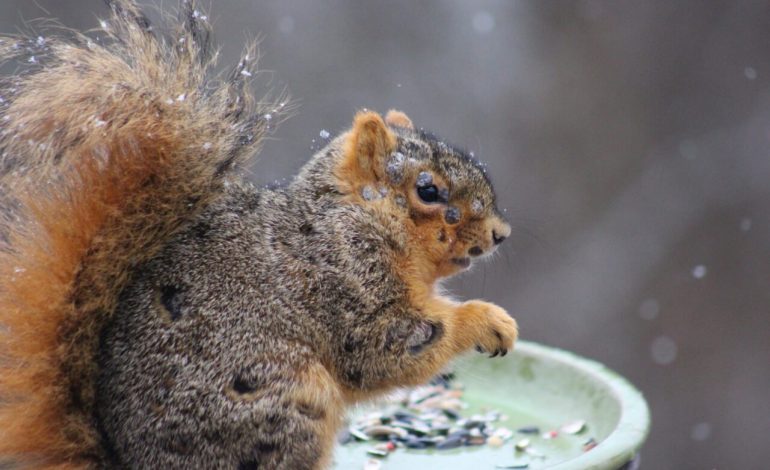From “Frankenstein Bunnies” to “Zombie Squirrels”: Strange Animal Sightings Raise Eyebrows in the Rockies

First it was rabbits in Colorado sprouting creepy black “horns.” Now, people across North America are spotting squirrels that look like they’ve wandered straight out of a horror movie.
Photos and videos circulating online show gray squirrels covered in hairless, wart-like growths — leading social media users to dub them “zombie squirrels.” The bizarre bumps aren’t the result of some new plague, though. Wildlife experts say the condition is called squirrel fibromatosis, a virus that’s been around for decades.
The virus, carried mostly by gray squirrels, belongs to the pox family and spreads through mosquitoes, fleas, or direct contact with other infected squirrels. Once it hits, it causes fibromas — big, fleshy growths — that tend to cluster on the face and limbs. As ugly as they look, the disease usually isn’t fatal. In most cases, the growths shrink and disappear on their own after a few weeks or months.
That hasn’t stopped the photos from sparking panic online. One Reddit user posted a shot of a badly infected squirrel, writing:
“Squirrel pox, ladies and gentlemen — thank God it’s only for squirrels.”
Wildlife officials stress that’s true: fibromatosis can’t infect humans, cats, or dogs. It’s specific to squirrels and, on rare occasions, rabbits or groundhogs.
“People don’t need to be afraid,” said Shevenell Webb with Maine’s Department of Inland Fisheries and Wildlife. “They’re just really ugly to look at. It doesn’t spread to people or pets.”
Still, there are cases where squirrels suffer. If tumors grow near the mouth or eyes, they can interfere with eating or seeing, sometimes leading to starvation or predators picking them off.
Experts also say humans may be making things worse without realizing it. Feeding wildlife — whether with bird feeders or scraps in the backyard — brings lots of squirrels together, making it easier for the virus to spread.
“It’s like packing sick people into a crowded room,” Webb explained.
The news comes just after reports of “Frankenstein rabbits” in Fort Collins, Colorado, where locals have spotted cottontail rabbits with black, antler-like growths sticking out of their heads and mouths. That condition is caused by shope papillomavirus, another rabbit-specific infection spread by insects. Like squirrel fibromatosis, it looks terrifying but doesn’t affect humans.
So while the sight of a lumpy squirrel or horned rabbit may stop you in your tracks, wildlife experts say the best thing you can do is leave them alone and resist the urge to feed them. They might look like extras from a low-budget zombie flick, but in most cases, they’ll recover and get back to raiding bird feeders in no time.
The Independent, Gizmodo, and AOL contributed to this report.









The latest news in your social feeds
Subscribe to our social media platforms to stay tuned